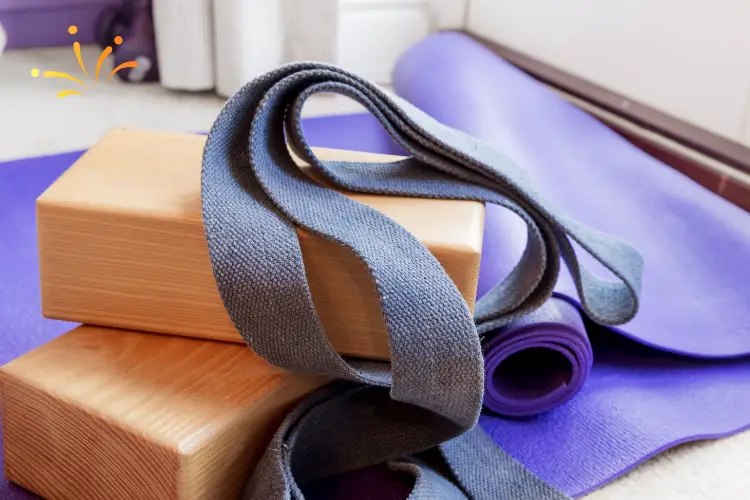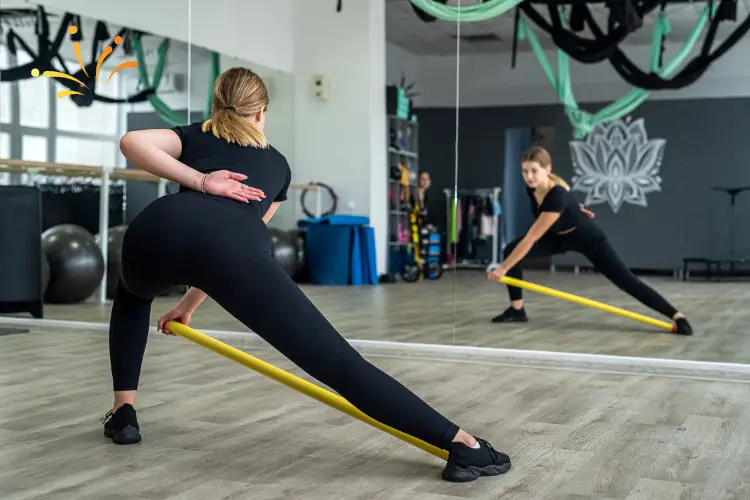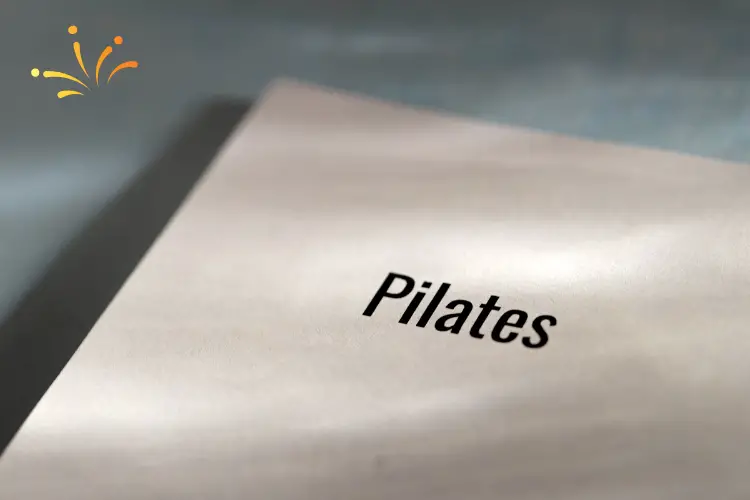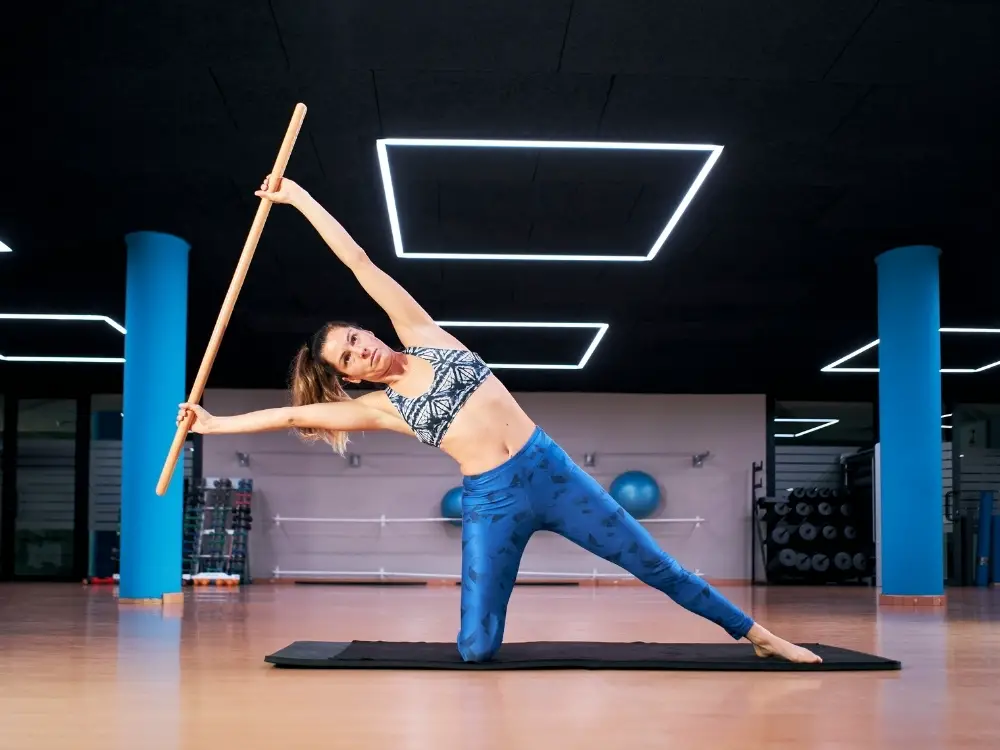Pilates is one of the rare activities that includes so many props and devices that make every exercise day different and fun.
Small props like balls, rings, elastic bands, and of course Pilates bars, are excellent for both studio and home use. Before you start using them, make sure that you know how to do it.
So, how to use a Pilates bar? This prop can be used for full body exercise, and it can activate all important muscle groups. Straps are used to create resistance while doing exercises where the bar is pulled. All movements must be followed by proper breathing.
Pilates bar is also good for balance and stretching, and can be used by beginners, as well as advanced exercisers who want to add some resistance to increase muscle activation.
Whether you are interested in making your body nice and lean, you want to increase your core strength, loose weight, or improve your posture, Pilates bar is an excellent prop.
Here I will tell you more about it, and even list a few basic exercises to help you start practicing and transforming your body!
Does the Pilates Bar Really Work?
This prop may seem very simple, but it is also very effective. Majority of exercises are done in a way that your feet are holding the elastic straps while the bar is pulled by your arms or upper body.
There are dozens of different exercises that include your core muscles, back muscles, arm muscles, and even leg muscles. For legs, the bar is held in place while your legs do the pulling.
Full body exercise can be done, or you can target specific areas you want to strengthen. This makes the Pilates bar one of the best props. It really works excellent.
Certain exercises and movements can also improve your balance and help you stretch more effectively.
To gain all these benefits you have to know how to use it to avoid injuries or improper muscle activation that won’t give you desired results. I will tell you more about this in the following chapters.

How to Use a Pilates Bar?
Pilates bar is an excellent prop because it adds resistance to movement without adding extra weight that you have to lift. This is why many studios use the bar, especially for beginners. It is a great preparation for more challenging machines and advanced classes.
So, how to use a Pilates bar?
I always say that you should go to a local studio and enrol in a class, at least for a few weeks, so that you can learn the basics. Experienced instructors will talk to you, evaluate your fitness level, and make a perfect exercise plan for you that will help you reach your goals.
How you will use a bar depends on your health, age, previous experience, levels of activity, and of course your wishes. Some people want to lose weight while others want to increase strength of a certain muscle group.
All these variations influence your usage of a Pilates bar.
Pilates bar can be used in a few different ways:
• alone for a full body workout
• alone for specific muscle group
• in addition to other props like balls or straps
• in addition to mat exercises
• as a recovery prop
If used as a recovery prop, make sure that you consult with your doctor first and that you exercise under supervision of an expert.

How to Use a Pilates Bar at Home?
Pilates bars are relatively small, lightweight, and easily portable which makes them excellent for home use. When you are done with practice, you can store it anywhere. Larger equipment, mostly machines like reformers are not suitable for small apartments. To make your mat Pilates exercise more effective, you can use small props like bars.
If you are wondering how to use a Pilates bar at home, here are some general tips. I will list the exercises in the next chapter.
First of all, you have to get a good Pilates mat that will not slip, and it will support you in a right way, especially your knees and arms when you are down on a mat and not standing.
Secondly, make sure that the straps are securely fitted around your feet before you start pulling the bar. If they slip, the elastic strap may hit you and trust me, it hurts. Pilates socks may help a lot here.
Using a bar has one downside, and that is the impaired flow from one exercise to another. If you only did mat Pilates before, this will be quite different as you will have to adjust the strap between various exercises.
If you have experience with Pilates and you know at least the basics about proper body alignment during exercises, you will adapt to the bar easily. It is a simple yet effective prop. But, if you have no experience with exercising, I advise you to visit a local studio to gain some experience first.

What are the Best Pilates Bar Exercises?
There are a lot of Pilates bar exercises, from easy to advance ones. Here is a list of the basic ones that will activate major muscle groups and are suitable for all fitness levels.
For legs:
If you want to activate your legs and gluteus, you can do it by doing classic squats but with addition of resistance. Pull the straps around your feet and place the bar across your shoulders, behind your neck. Hold it in place with your hands that should be placed on a bar a few inches wider than your shoulders. Inhale on your way down, exhale on the way up. Make sure that your knees don’t go over your toes.
For arms and upper back:
Place the loops around your feet and place the bar across your shoulders in the same way as in the previous exercise. Stand upright and lift the bar up above your head on exhale, and lower to the shoulders on inhale. If the straps are hard, this may be a challenging task.
If you want, you can combine these two exercises. When you are low in a squat keep the bar on the shoulders, and when you rise, lift the bar up with your hands. Lower it as you go down in the squat again.
For abs and core:
Lay on your back and place the loops of the straps around your feet. Hold the bar with your hands straight above and behind your head, close to the floor, but not touching the floor.
Make sure that your lower back is pressed against the floor, that is very important. Hold the bar in place and use your legs to stretch the straps. Start with your knees bended towards your chest, and slowly straighten them. Repeat the process.
If you want you can do a bicycle motion with your legs, it is a variation of this exercise.
What are the Benefits of Pilates Bar?
There are many benefits of Pilates bar and those are the following:
• weight loss
• reduction of back pain
• muscle strengthening
• improving posture
• improving balance
• Improving your cardiovascular system
• Improving your metabolism
• Reducing stress levels
Depending on how you use a Pilates bar you will notice some of these improvements sooner and some of them later. Your personal use and exercise program also influence how noticeable these benefits will be.
For optimal results you should exercise 3-4 times a week for 45 minutes to 1 hour. First results can be observed after a few weeks, but significant changes will show after about three months.
If you don’t have that much time to exercise don’t worry, even 20 minutes of Pilates is better than nothing.

What Should You Look for When Buying Pilates Bar?
Buying a Pilates bar is not a complicated task. It is a simple prop, and you don’t need extensive knowledge as you would need for buying a full size, studio-grade, reformer. However, there are some things to consider:
Padding
The bar is padded for comfort and get the one that has thicker padding.
Manufacturer and price
There are various manufacturers and price ranges, but generally bars are affordable. Avoid very cheap ones as they may break. If they break in the middle of a move, there is a risk of injuries.
Straps
Straps have to be firm and dependable, especially the loops that go around your feet. Wide ones are generally better as they won’t cut your feet and feel uncomfortable. The strength of the straps (their resistance) can also vary so consider your fitness level. If the strap length can be adjusted and they can be changed, that is a huge plus.
Portability
If you plan to carry it with you on trips or to the studio, choose models with bars that can be disassembled.

What is the Best Pilates Bar to Buy?
What is the best Pilates bar depends on your needs and wishes. Most of them are about 90-115 centimeters wide (35 to 45 inches), but variations exist. Your height and length of your arms play a role here.
If you want to buy the best Pilates bar for home use, think about Pilates bar kit like this one.
The bar comes in three sections which makes it great for traveling and storage at home. Leg loops are wide, and resistance straps are made from latex. Latex is great for cleaning and removal of sweat after hard exercises. When all three sections of a bar are assembled it is 46 inches long, which is enough even for very tall people.
Foam is thick and strong and provides comfortable use. The bar is made from iron which makes it extremely firm. Altogether, this is an excellent kit that comes at a great price!
MALOOW also has an excellent options, as it has resistance bands of different strength so you can add or remove straps, depending on exercises you are doing.

Conclusion
There are many benefits of Pilates bar including muscle strengthening, weight loss, and improved posture. And the best of all, this affordable, light, and relatively small prop can be used at home whenever you want!
Before you start exercising make sure that you know how to use a Pilates bar and start with basic exercises suitable for beginners. As your body transforms, so will the exercises you are doing.
If you are in a search for a perfect bar, make sure that it is firm, dependable, and comfortable to use!

